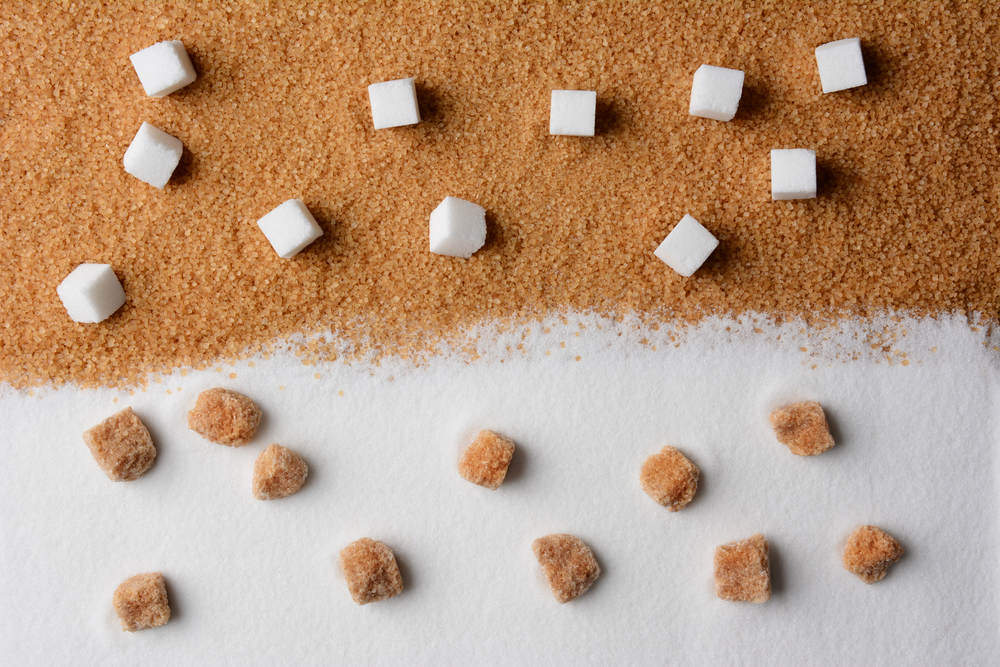Written by Emily Rollins
Everybody loves the taste of an ice cold Coke at a summer barbecue. And who can resist a warm, flakey donut on their way to work? Let’s face it, as Americans, we love our fizzy sodas and our Krispy Kreme’s, but the health consequences resulting from our high-sugar diet may not be so sweet…
Did you know that the average American consumes around 100 grams (19 teaspoons) of sugar every day? The FDA recommends that we cap our daily sugar intake at 50 grams, but in our sugar-saturated world, it’s easy to go overboard. To put this number into perspective, a 20-oz bottle of classic Coke packs 65 grams of sugar. Yikes!
Excess sugar consumption is linked to an increased risk for a variety of health problems from diabetes and heart disease to tooth decay and behavioral problems. Eating too much processed sugar can also cause candida (yeast) overgrowth in the body which may lead to headaches, intense sugar cravings, digestive issues, brain fog, and generally feeling sluggish.
Sometimes it feels as if we are chained to our sugar habit and there’s no way to break free. But don’t lose hope just yet, because there are actions you can take to successfully break this crazy cycle of craving sweets and indulging in sugary foods! Here are five steps to get you started…
1. Unveil the sugar load
You might be shocked to discover how much sugar is hiding to single loaf of bread or specialty cut of coffee. Sugar is everywhere! Most well-intentioned shoppers don’t realize that many everyday items that we don’t think as “sugary sweet” can pack quite a bit of sugar. Some basic foods that seem innocent but might contain a load of added sugar are: sauces, dressings, condiments, processed meats, sports drinks, granola, and breads and baked goods of all kinds.
Start by scoping out the nutrition labels and ingredient lists on the back of packaged foods in your pantry and at the grocery store. Ask to see the nutrition facts sheet when you’re out getting fast food or on a coffee run. Nowadays, most chain operations have nutrition facts readily available for you to browse online, so take advantage!
2. Take note
Start a food journal. Write down everything you eat and drink for a week and then reflect on your findings. When do you tend to eat the most sugar? Is it during social events when all your friends are indulging in cookies and ice cream? Do you cave to the sugar when you’re feeling emotional and stressed out? Identify any “triggers” that may cause you to go overboard on the sugary junk food.
Remember that the goal of this food journal is not to make you feel bad about your food choices or to force you to ditch all your sugary snacks at once. By writing down everything you’re eating, you will become more aware of what, why, and how much sugar you’re consuming on a regular basis. Once you’re armed with these personal insights you’ll be able to tailor an eating plan to fit your specific needs.
3. Go in with a game plan
You would never expect someone addicted to cigarettes or alcohol quit cold-turkey without experiencing a relapse, so you should treat your mission to quit sugar in a similar fashion. According to research by neuroscientists, the human brain responds to processed sugar in a similar way that it responds to drugs like opiates. Because of this, quitting sugar may be more challenging than it seems at first. Most folks who follow the Standard American Diet are unaware that they are hooked on sugar and they don’t realize how much they rely on it to give them energy when they’re feeling low, provide clarity in a moment of stress, or unwind after a long day at the office. So, it’s best to go into this lifestyle change with open eyes and a game plan.
You can expect to go through an initial “withdrawal phase” where you may feel low energy and irritable so plan the sugar cleanse so it doesn’t overlap with vacation, holidays, or any stressful events that may cause you to reach for that candy bar against your better judgement. But these unpleasant feelings won’t last forever! In fact, you should expect to start feeling the benefits about a month after adopting your low sugar diet.
It is way easier to follow through with diet and lifestyle changes if you have a concrete timeline and measurable, daily goals. Your goal may be to cut out processed sugar entirely or you might start by limiting your added sugars to 25 grams per day. Another option is to just drop soda and candy from your diet, and work towards a stricter goal after you have achieved your first goal. Whatever you choose, make sure that it is something attainable so you aren’t tempted to give up halfway through the month.
4. Equip yourself with an alternative menu
A huge reason why so many people crash and burn on their diet is because they remove so much “bad food” from their diet and fail to replace it with something healthy. This doesn’t work! Just imagine that you’re hungry and you start dreaming about donuts while at your work desk. Don’t just resist the donut and go hungry; make sure you replace that sugary snack with a healthy alternative that will leave your stomach full and your brain satisfied. You could replace your morning donut with a banana and peanut butter (non-sweetened peanut butter, of course!) That snack swap not only removes the donut from your day, but it also keeps you fuller longer because it contains protein and good fats in addition to the natural sugars in the banana that will curb your sweet tooth.
Plan out your meals and snacks in advance, at least for the first few weeks, so you don’t resort back to your sugar habit when you’re feeling starved. The goal of your sugar cleanse is not to deprive yourself and make you feel hungry. On the contrary, filling your body with plenty healthy, nutrient-dense foods should put an end to food cravings and lead to sustainable results.
5. Make it a family affair!
It is so much easier to stick to any kind of diet or lifestyle change when you’re not alone on your journey. If you can talk your family into joining you on your sugar-cleanse then you’re much more likely to be successful, plus it will improve everyone’s health in the long run. Family meal planning and home cooked dinners can be a great time to explore topics like health and nutrition with your kids!
It’s also wise to remember that all healthy habits have to start somewhere. It’s never too late to rewrite your own “dietary script” and start making an investment in your health.
Quitting sugar is tough, but you’re tougher! Keep in mind that mental strategies like goal setting and visualizing a positive future can help guide you through the tough weeks at the beginning of your cleanse. Invite others to join you in your new, healthier diet and maybe your sugar-free month will turn into a sugar-free year. Why not start today? You future self will thank you!
Sources: onlinelibrary.wiley.com, jamanetwork.com, ajcn.nutrition.org
More Tips to Lower Sugar Intake
- Trade up to 50% of your white sugar for Stevia while baking! Stevia is an all-natural, plant-based sweetener that has zero calories and no side effects. It is also an ideal choice for diabetics because it doesn’t raise your blood sugar like other sweeteners do.
- Fill up on healthy fats throughout the day. Avocado, nuts, and coconut are all great sources of good, nutritious fat that will keep you feeling fuller, longer, and delay those sugar cravings.
- Take advantage of the rising “sugar free” trend and look for sodas and deserts made with Stevia instead of real sugar or fake sweeteners. Healthy brands like Zevia are a great swap for regular soda when you’re craving a fizzy drink!
- Look for baking and desert recipes that use honey, dates, or figs rather than cane sugar. These natural sweeteners come with health benefits that cane sugar does not, and they can add a new, exciting flavor to an old favorite dish!


No Comment